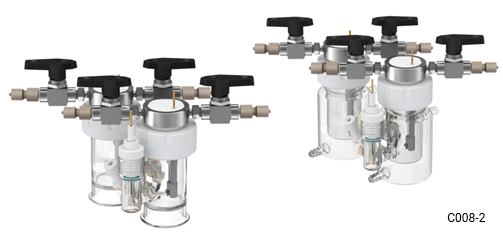Description
Description:
- The cell is made of high purity borosilicate glass.
- The electrochemical cell achieves atmosphere protection by adding valves and aeration devices.
- The electrochemical cell is an absolutely sealed system, which can be evacuated through the valve (below -100Kpa), and the electrochemical cell can be slightly pressurized. For safety reasons, the pressure should not exceed 0.5MPa.
- The electrodes of the electrochemical cell must be customized to match the electrochemical cell .
- The reference electrode and working electrode of the electrochemical cell are separated, and connected by Luggin capillary to effectively reduce R drop.
- The hole diameter of the tip part of the electrochemical cell Luggin capillary extending into the working electrode chamber should not be greater than 0.2mm.
- Agar can be added to the Luggin capillary of the electrochemical cell to reduce the flow rate of the electrolyte.
- The reference electrode chamber of the electrochemical cell is sealed with an internal thread, which must be sealed during use to effectively prevent the reference electrode chamber and the working electrode chamber from seeping due to the effect of the connector.
- This electrochemical cell is commonly used in 3-electrode system, and can be customized according to requirements.
- The electrochemical cell is an absolutely sealed electrochemical cell system, the cathode chamber and the anode chamber are separated by an ion membrane, and the two chambers are sealed and connected by a chain, which is convenient for replacing the diaphragm.
- The top electrodes holder is 360-degree rotatable, made of PTFE, allowing precise alignment of electrodes with the channels (generally parallel to the membrane).
All sizes listed are common sizes, can be customized according to requirements.
| Volume (ml) | Volume (ml) | Single layer |
Jacketed |
|
| 5-10mL | 150mL | |||
| 30mL | 200mL | |||
| 50mL | 250mL | |||
| 100mL |






Reviews
There are no reviews yet.